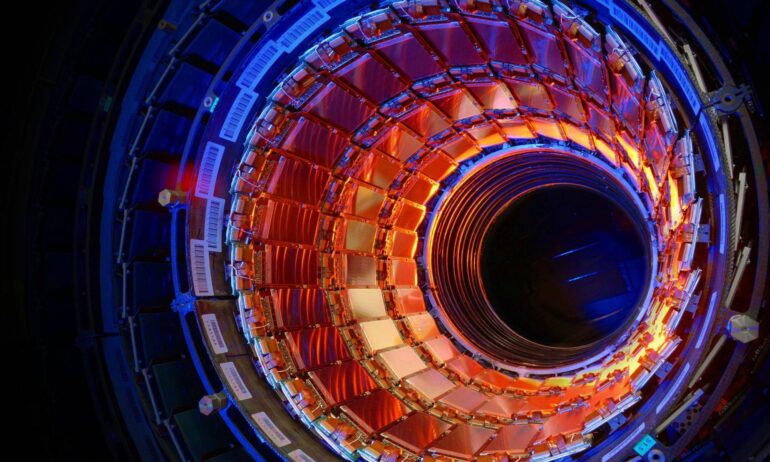TL;DR:
- The Large Hadron Collider (LHC) has been a vital tool for scientific exploration since 2009, seeking particles and phenomena beyond the Standard Model.
- Traditional methods rely on simulations matching observed collision data, limiting discovery potential.
- Unsupervised machine learning, particularly autoencoders, offers a model-agnostic approach to identify anomalies in collision data.
- ATLAS researchers propose a groundbreaking framework using autoencoders to uncover anomalies that could indicate new physics.
- Autoencoders compress and decompress data, spotlighting anomalies as deviations from expected patterns.
- Success lies in identifying and characterizing anomalous events, potentially revealing physics beyond the Standard Model.
Main AI News:
The birth of the Large Hadron Collider (LHC) in 2009 marked a monumental leap in the realm of scientific exploration. With a steadfast commitment to pushing the boundaries of the known, this groundbreaking instrument embarked on a journey to unearth particles and phenomena that defy the confines of the Standard Model. Yet, the pursuit of novel physics has long been shackled by traditional methodologies – methodologies reliant upon intricate computer simulations that align observed collision data with the forecasts of established models. The drawback?
These conventional practices are constricted by their allegiance to predefined models and simulations, rendering them blind to the enigmatic anomalies that lie beyond prediction. To transcend this limitation, a new frontier emerges as researchers embrace the power of unsupervised machine learning, employing it to discern anomalies within collision data that may herald the arrival of uncharted physics phenomena.
In the current landscape, the quest for uncharted physics unfurls through simulations mirroring the behavior of familiar particles, in step with well-worn models. By juxtaposing pristine collision data against these simulations, deviations come to light – tantalizing hints at unexplored phenomena. An alternative avenue seeks subtle deviations from the backdrop of the Standard Model, a telltale sign of emerging processes. Yet, even these approaches are ensnared by the assumptions woven into the fabric of the models they stem from.
Amid this scientific crossroads, ATLAS researchers present a paradigm-shifting proposition: a novel framework for untangling the intricacies of LHC collision data. This ingenious framework harnesses the prowess of unsupervised machine learning, with a particular focus on a sophisticated neural network – the autoencoder. Unlike its predecessors, this methodology remains agnostic to the constraints of predefined hypotheses, liberated from preconceived anticipations.
At its core, this novel framework hinges upon the meticulous training of an intricate neural network utilizing genuine LHC collision data. Comprising a complex interplay of interconnected “neurons,” this neural network, christened the autoencoder, embarks on a dual mission of compression and subsequent decompression. The crux lies in the juxtaposition of the initial input with its output, a litmus test for discerning the norm from the aberration. It is through this juxtaposition that the autoencoder’s discerning eye segregates the “typical” collision occurrences, ushering them out of the spotlight to focus on the events that defy convention – aptly dubbed “anomalies.”
These anomalies serve as beacons, illuminating instances where the neural network falters in its attempt to decipher patterns, thus beckoning the possibility of nascent physics phenomena. To scrutinize these anomalies, the researchers delve into the invariant masses of particles born from the collisions, probing whether they owe their existence to the choreography of the Standard Model or if they foreshadow a narrative yet untold.
The litmus test for the triumph of this approach rests upon its ability to fathom and characterize these enigmatic anomalies. The anomalies, which the autoencoder astutely flags, undergo a meticulous examination to discern their potential alignment with uncharted physics phenomena. A stark divergence between the reconstruction of input and output data serves as a compass, directing attention toward events that hold the promise of physics that transcends the boundaries of the Standard Model.
Conclusion:
The integration of unsupervised machine learning, exemplified by the innovative use of autoencoders, redefines the exploration of particle physics. This transformative approach empowers researchers to identify anomalies and deviations within collision data, shedding light on uncharted physics phenomena. As these advancements push the boundaries of understanding, the market can anticipate potential breakthroughs in various industries, from energy to materials science, driven by insights gleaned from the intricacies of particle interactions.

